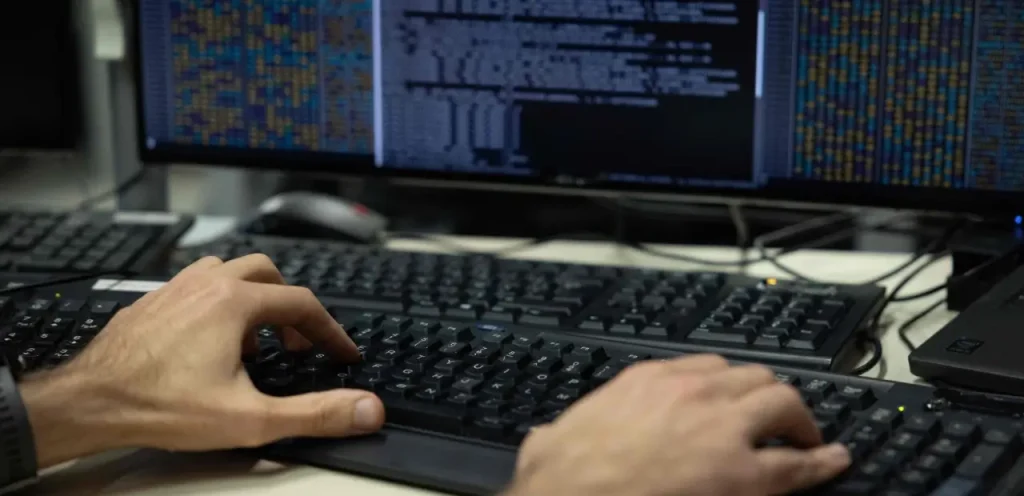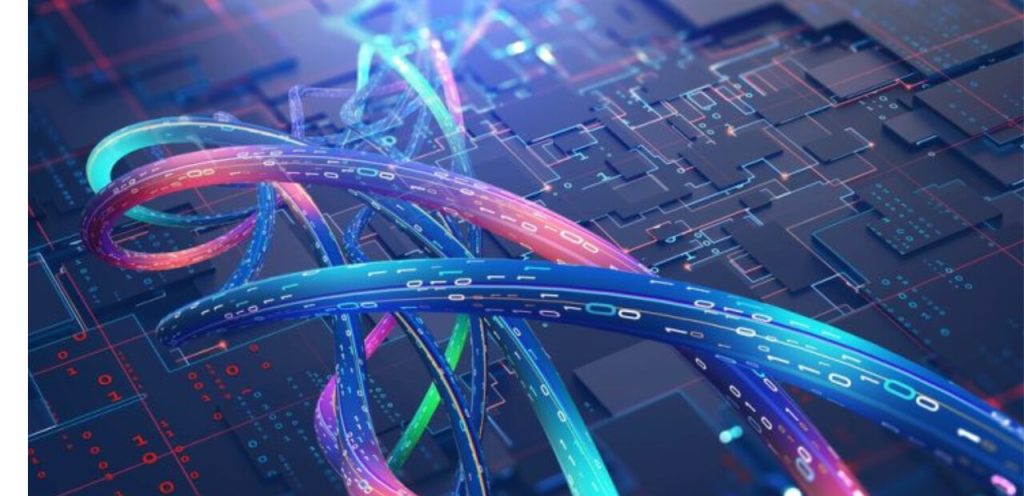Software engineers need physics to understand the principles underlying hardware behavior. Grasping physics enables better optimization and innovation in software development.
Discovering the unexpected connection between software engineering and physics can unveil a multitude of benefits for professionals in the tech industry. Mastery in physics provides software engineers with a deep appreciation of the hardware’s capabilities and limitations, which is paramount for creating efficient and innovative software solutions.
It empowers engineers to anticipate and solve complex problems by applying physical laws to computational systems. A well-rounded understanding of physics fosters a robust foundation for tackling challenges in disciplines like robotics, machine learning, and quantum computing, where physical concepts directly intersect with software functionality. Recognizing the profound impact physics has on software development highlights the importance of a multidisciplinary approach in the tech realm, ensuring software engineers are well-equipped to drive progress and excel in their craft.
Introduction To Interdisciplinary Benefits
The Overlap Between Software Engineering And Physics
Physics and software engineering share a secret bond. This link shapes our world, from algorithms to data structures. It’s all about problem-solving. Engineers use laws from physics to think through complex code. They also learn how objects interact. This makes their software smarter.- Optimal performance: Principals from physics guide better software.
- Creative solutions: Physics encourages unique answers to tricky problems.
- Faster computing: Physics teaches how to make code run swiftly.
Exploring The Unlikely Relationship
This bond might surprise you. Software seems virtual. Physics feels physical. But together, they spark true innovation. Physics offers a base for problem-solving. This helps engineers craft groundbreaking software. It helps in making systems efficient and robust.| Physics Concept | Software Engineering Benefit |
|---|---|
| Gravity | Understand system’s pull; apply it in UI/UX design |
| Momentum | Tweak algorithms for better performance |
| Energy | Build sustainable, energy-efficient applications |

Credit: itrevolution.com
Fundamental Concepts Of Physics In Computing
Understanding Computational Models Through Physics
Physics offers the blueprint for modelling computational systems. Computational models mimic the real world. They use physics to simulate actions. Let’s look at two aspects:- Quantum computing: It uses subatomic particles’ behavior for data processing.
- Thermodynamics: It helps in managing heat produced by computers while running complex calculations.
The Role Of Algorithms And Physical Laws
Algorithms and physical laws go hand in hand. Algorithms use physics laws to solve problems. Think of it like recipes that computers follow to get results. These algorithms calculate with precision because they rest on stable physics laws. An example is drawing graphics on a screen with computer graphics algorithms which rely on geometric optics principles.| Algorithm Type | Physics Principle |
|---|---|
| Graphics Rendering | Optics |
| Data Encryption | Quantum Mechanics |
| Signal Processing | Wave Propagation |
Problem Solving Skills Enhanced By Physics
How Physics Equips Engineers With Analytical Tools
Physics, at its core, is about solving mysteries of the universe. Software engineering also tackles complex problems. Both domains rely on structured thinking. Physics trains the mind to break down issues into basic elements. By mastering physics principles, engineers gain valuable tools:- Conceptual understanding of how components work together
- Mathematical skills to quantify problems and create models
- Logical reasoning to develop step-by-step approaches to challenging scenarios
Case Studies: Physics-inspired Software Solutions
Real-world examples show how physics principles lead to ingenious software outcomes. Here are a few case studies:- Physics Algorithms in Graphics Software: Game developers use physics to make graphics lifelike. They use Newton’s laws to simulate gravity and motion.
- Network Theory in Social Media Algorithms: Concepts from physics help map and understand complex networks. This leads to smarter feed algorithms.
- Data Storage Solutions: Quantum mechanics has influenced data encryption. Data stays safe because of principles discovered by physicists.

Credit: www.futurelearn.com
Physics And The Art Of Software Optimization
Applying Thermodynamics To Improve System Efficiency
Thermodynamics deals with energy, heat, and work. In software, these concepts relate to system performance and resource management. Thermodynamics teaches us that systems always head towards entropy, or disorder.- Minimize computational waste
- Optimize resource allocation
- Balance load efficiently
Leveraging Quantum Mechanics For Cryptography
Quantum mechanics is at cutting edge technology. It is changing how we think about computing and security.| Classical Cryptography | Quantum Cryptography |
|---|---|
| Based on mathematical complexity | Uses quantum principles |
| Vulnerable to quantum computers | Enhanced security through quantum |
Navigating Through Complex Systems
Chaos Theory And Its Impact On Software Development
Chaos theory explains how small changes can lead to significant impacts. In software development, this translates to tiny bugs causing major software issues. Understanding chaos theory helps engineers predict and mitigate these risks.- Predictive models improve with chaos theory principles.
- Algorithms harness chaos for better solutions.
- Quality assurance strategies evolve.
Lessons From Physics: Managing Interconnected Software Components
Physics teaches how components in a system interact. Software systems have numerous interconnected components. Recognizing these interactions is crucial.| Physics Principle | Software Application |
|---|---|
| Entropy | Maintain clean, organized code. |
| Forces and Motion | Develop dynamic, responsive software. |
| Relativity | Consider user perspective for interfaces. |
Physics Principles In Game And Simulation Development
Creating Realistic Environments With Physics Engines
Imagine a virtual world where objects fall, collide, and move just like they do in real life. This is possible thanks to physics engines. They are tools that allow software engineers to inject real-world physics into digital creations. These engines apply laws of motion, gravity, and other fundamentals to make the game environment believable and challenging.- Gravity effects pull objects to the ground.
- Collision detection stops things from passing through each other.
- Friction and bounce make surfaces feel real.
Simulating Natural Phenomena In Virtual Worlds
Nature is complex, yet game developers can mimic its behaviors. Virtual worlds come alive with simulated weather, fluid dynamics, and even the vastness of space. Imagine a storm brewing overhead or a river seamlessly flowing; it’s all underpinned by physics.| Phenomenon | Physics Principle |
|---|---|
| Weather Patterns | Thermodynamics and Fluid Mechanics |
| Water Flow | Navier-Stokes Equations |
| Celestial Mechanics | Newton’s Law of Universal Gravitation |
- Weather engines create dynamic climatic conditions.
- Water simulations deal with complex fluid movements.
- Space simulations require precise orbital mechanics.
Innovations In Hardware From A Physics Perspective
Advancements In Semiconductor Technologies
Recent innovations in semiconductor technologies have transformed digital landscapes. Ground-breaking materials like silicon carbide propel semiconductors forward. They offer higher efficiency and power levels. These advancements are rooted in quantum mechanics, a core physics domain.- Miniaturization of semiconductor components
- Silicon alternatives for better performance
- Enhanced energy efficiency in devices
The Next Frontier: Quantum Computing And Software Synergy
Quantum computing heralds a new era in computational power. Physics unlocks the potential of quantum bits, or qubits. Qubits operate differently than traditional bits. They allow for exponential growth in processing capabilities. Quantum computing’s rise signifies a need for software engineers to grasp quantum physics fundamentals.| Traditional Computing | Quantum Computing |
|---|---|
| Binary bits (0s and 1s) | Qubits (0s, 1s, and superpositions) |
| Sequential processing | Parallel processing |
| Limited by transistor size | Not bound by physical transistor limits |
Software In Scientific Research And Physics Applications
Software Tools For Physics Research And Experimentation
Physics research demands precision and meticulous data analysis. This is where software comes into play.- Data acquisition systems capture readings from experiments
- Statistical tools analyze vast datasets with speed and accuracy
- Visual representation tools turn numbers into understandable charts
Modeling And Simulation Software For Theoretical Physics
Theoretical physics often ventures into realms where traditional experiments are not possible. Modeling and simulation software bridge this gap.| Software | Use Case |
|---|---|
| Quantum Mechanics Simulators | Explore particle behavior at the subatomic level |
| General Relativity Tools | Examine the effects of gravity on space-time |
| Climate Models | Predict changes in Earth’s atmosphere over time |
Preparing Software Engineers For Physics-intensive Industries
Education And Training: Integrating Physics Into The Curriculum
Physics offers tools and concepts critical for complex system understanding. Integrating physics into software engineering curricula has become essential.- Teaching programming alongside physics demonstrates real-world applications.
- Labs and simulations introduce software tools used in physics research.
- Physics-based modules enhance computational thinking.
Career Paths At The Intersection Of Physics And Software Engineering
Distinct industries now seek talents combining software and physics expertise.| Industry | Role |
|---|---|
| Aerospace Engineering | Flight Software Engineer |
| Healthcare Tech | Medical Physics Developer |
| Game Development | Physics Engine Programmer |
| Robotics | Algorithm Engineer |
Physics As A Catalyst For Innovation In Software Design
Inspiration From Physical Phenomena For User Interface Design
User interfaces leap forward when grounded in reality. The bounce of a ball, the gravitational pull, and the seamless glide over a surface have inspired stunning UI animations. These elements bring familiarity and an element of surprise to digital interactions. Developers can employ physics to make software not just functional, but delightful.Natural User Experiences Informed By The Physical World
Software that mimics the real world allows for more intuitive use. Users navigate naturally when the digital space behaves like the physical one. By intuiting a user’s learned experiences with physics, engineers can build interfaces that respond in expected ways, reducing the learning curve and enhancing user satisfaction. Key Takeaways:- Physics principles stimulate innovative UI designs.
- Digital interactions gain value through real-world mirroring.
| Physical Concept | UI Application Example |
|---|---|
| Inertia | Scrolling behavior in applications |
| Elasticity | Animation of elements during transitions |
| Gravity | Element placement and movement logic |
Understanding Data Through A Physical Lens
Data Analysis Techniques Borrowed From Physics
Data analysis may seem distant from Newton or Einstein, yet physics offers a rich toolbox for software engineers.- Signal processing: Adapted from electrical engineering, helps filter out ‘noise’ from data.
- Thermodynamic models: Imagine viewing data as particles in a system, predicting its state.
- Quantum computing principles: Leverage these to solve complex data problems faster.
Applying Statistical Mechanics To Big Data Challenges
Physicists use statistical mechanics to predict particle behavior. Software engineers can use similar math to predict data trends.| Physics Concept | Big Data Application |
|---|---|
| Entropy | Measuring data disorder or complexity |
| Phase Transitions | Understanding sudden changes in data patterns |
| Ensemble Averages | Forecasting based on multiple data scenarios |
The Emergence Of Smart Technology And Iot
The Symbiosis Of Physics And Software In Smart Devices
In the heart of smart tech, physics and software meet. Physics powers the sensors. Software makes sense of this data. Together, they create devices that respond to our world.- Accelerometers in phones use physics to track movement.
- Thermostats learn patterns and save energy using software algorithms.
Challenges And Opportunities In Iot Development
Building IoT systems is tough but exciting. Precision is key. Physics expertise ensures accuracy in measurement and data transmission.| Challenges | Opportunities |
|---|---|
| Securing devices from hackers | Creating smarter home systems |
| Handling massive data flows | Improving health with wearable tech |
| Ensuring devices communicate well | Optimizing energy use in cities |
Energy Efficiency And Sustainable Computing
Laws Of Thermodynamics Applied To Energy Usage In Software
Understanding the laws of thermodynamics helps software engineers make smart choices about energy use. These laws explain how energy moves and changes form. Here’s how they matter in software:- First law – Energy can’t appear or disappear, only change form. So, software must use energy wisely.
- Second law – Energy spreads out and can become less useful. Software needs to minimize this spreading to be efficient.
| Law | Impact on Software |
|---|---|
| First Law | Guides energy-conserving software design |
| Second Law | Informs strategies to reduce entropy in computing |
Physics’ Role In Green Computing Initiatives
Green computing means eco-friendly technology. Physics plays a huge role here. It helps engineers think about the environmental impact of tech:- Find ways to lower power used by software.
- Design algorithms that do more with less energy.
- Build systems that generate less heat, so less energy is wasted cooling them.

Credit: www.futurelearn.com
Machine Learning And Ai: Learning From Physical Systems
Neural Networks And Concepts Borrowed From Physics
Neural networks take inspiration from the human brain. Physics principles help these networks learn better. For instance, thermodynamics, entropy, and energy landscapes are key to understanding how neural networks tackle complex problems. These concepts dictate how information flows and transforms within a network. Here’s why it’s important:- Thermodynamics: provides a framework for network stability and learning efficiency.
- Entropy: measures information diversity, key for robust decisions.
- Energy Landscapes: illustrate problem-solving paths neural networks can take.
Algorithmic Evolution: The Influence Of Physical Theories
Theories from physics drive algorithmic advancements. Quantum mechanics and relativity have challenged and inspired computational methods. These influence the design and complexity of algorithms. They shape machine learning tools for predictive modeling and pattern recognition. Here’s a view of these influences:| Physical Theory | Influence on Algorithms |
|---|---|
| Quantum Mechanics | Leads to quantum computing and probabilistic models enhance decision-making. |
| General Relativity | Introduces concepts like space-time warping, used in algorithm optimizations. |
Digital Signal Processing: The Physics Behind The Code
Acoustic Modeling And Software Engineering
Imagine recreating the echo of a canyon or the richness of a concert hall. Acoustic modeling makes this possible. Software engineers use DSP algorithms to craft virtual sound environments. Let’s explore the key elements:- Sound Wave Propagation: How sound travels through different mediums.
- Frequency and Amplitude: These elements define the pitch and volume of a sound.
- Reverberation and Echo: The way sound bounces off surfaces and returns.
The Wave Equation In Digital Media
At the heart of digital media lies the wave equation. This equation helps turn vibrations from the physical world into digital signals. Here’s a simplified breakdown:| Physical Concept | Importance in DSP |
|---|---|
| Frequency | Defines the pitch in digital audio. |
| Amplitude | Translates to the loudness in digital format. |
| Oscillation | Helps in creating the waveform for digital signals. |
Software Engineering Ethics And The Physicist’s Mindset
Exploring software engineering through the lens of physics reveals a dual need for analytical skills and ethical reflection. Knowledge of physics principles can lead to profound insights into the workings of software systems. Engineers possess the ability to impact society significantly. Therefore, ethical considerations become as crucial as technical expertise.
Ethical Considerations In Automating Systems With A Physics Foundation
- Accurate Predictions: Systems based on physics must predict outcomes reliably.
- Safety Measures: Safety is paramount, especially when dealing with automation that affects people’s lives.
- Transparency: Users deserve to understand how automated systems make decisions that impact them.
- Data Integrity: Physics-based systems must use accurate and unbiased data to avoid harm.
Software engineers must ask themselves: Does the system do good without causing harm? Physics knowledge guides this ethical evaluation.
The Responsibility Of A Software Engineer With Physics Knowledge
- Informed Design Choices: Engineers must use physics knowledge to avoid errors in system behavior.
- Understanding Impact: An awareness of a system’s physical implications is crucial for preventing accidents.
- Continual Learning: Staying updated on the latest physics discoveries is vital for responsible engineering.
With greater knowledge comes increased responsibility. Knowing physics, a software engineer must act thoughtfully, ensuring technologies benefit society.
Future Trends: Where Physics Could Take Software Next
Exploring The Potentials Of Nanotechnology In Software
Nanotechnology offers vast opportunities for software enhancement, particularly in hardware performance and efficiency. The manipulation of materials on an atomic scale leads to unprecedented precision and possibilities.- Nano-chips could drastically increase computing speeds, making software more responsive.
- Storage solutions may evolve with denser data packing, facilitated by nanoscale advancements.
- Energy efficiency can reach new heights as nanotech leads to less power-hungry components.
Anticipating Breakthroughs In Computational Physics
Computational physics stands to catalyze pivotal changes in software development. Algorithms inspired by physical processes tackle complex system behaviors.| Physical Phenomenon | Software Application |
|---|---|
| Quantum Mechanics | Secure Communication Protocols |
| Thermodynamics | Optimized Resource Management |
| Relativity | Accurate GPS and Timing Services |
Bridging The Gap: Interdisciplinary Teams And Projects
Collaborative Workspaces That Join Physicists And Software Engineers
Dynamic collaboration spaces bring physicists and software engineers under one roof. These environments foster mutual learning. Team members share their expertise to solve complex problems. They collaborate on everything from artificial intelligence to spacecraft technology.- Cross-disciplinary sprint meetings encourage ongoing dialogue.
- Joint workshops help team members learn the basics of each other’s fields.
- Integrated labs provide real-time testing and innovation.
Successful Case Studies Of Interdisciplinary Technology Projects
Many high-tech projects exemplify the power of interdisciplinary collaboration.| Project Name | Collaborative Fields | Outcome |
|---|---|---|
| Quantum Computing | Physics & Software Engineering | Developed reliable quantum algorithms |
| Virtual Reality Systems | Physics & Software Engineering | Created immersive virtual experiences |
Conclusion: Embracing Physics In Software Engineering
The Untapped Potential Of Physics In The Tech Industry
Physics is a hidden gem in technology’s fast-paced world. It’s not just for scientists but key for tech pioneers. Understanding motion, energy, and force opens doors to efficient algorithms and smart robotics. This knowledge shapes how we approach computing challenges.- Faster computing solutions from quantum mechanics
- Better materials for devices through materials science
- Improved energy efficiency using thermodynamics
Looking Ahead: Continuous Learning And Innovation At The Nexus
The tech industry thrives on continuous learning and innovation. Physics is a powerhouse for both. Embrace it to stay ahead. The intersection of physics and software engineering is where the next big thing could emerge.- Engage with physics to boost problem-solving skills.
- Anticipate future tech trends by applying physics concepts.
- Pave the way for revolutionary advancements.
Frequently Asked Questions On The Surprising Reason Why Software Engineers Need Physics
Why Is Physics Important In Software Engineering?
Physics grounds software engineering by ensuring algorithms accurately model real-world phenomena, especially in simulations, game development, and robotics. It helps predict and optimize system behaviors, enhancing computation and technology reliability.
Do You Need Physics To Study Software Engineering?
Physics is not typically a core requirement for software engineering. Understanding basic principles can be beneficial but is not essential for most software engineering programs, which focus more on mathematics and computer science skills.
Why Is Physics Important In Programming?
Physics is crucial in programming as it enables realistic simulations, enhances game mechanics, and informs algorithms for physical interactions, improving user experience and authenticity in virtual environments.
Can I Study Software Engineering Without Physics And Chemistry?
Yes, you can study software engineering without a background in physics or chemistry. Focus on mathematics and computer science basics for better preparation.
Why Is Physics Important For Software Engineers?
Physics principles are foundational for understanding computational concepts and hardware operations, thus aiding software development efficiency and problem-solving.
How Does Physics Improve Coding Skills?
Knowledge of physics fosters critical thinking and logical reasoning, which are essential for writing efficient, optimized, and inventive code.
Conclusion
Understanding physics equips software engineers with a versatile skill set, enhancing problem-solving and critical thinking abilities. It’s clear that the principles of physics apply, from algorithms to system architecture. Embrace this knowledge; it’s a game-changer for programming mastery and innovation.
Let physics propel your coding to new heights.










